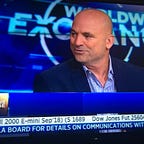FAMGA (Facebook, Apple, Microsoft, Google, Amazon) Is Eating The World
In stock market parlance, FANG (Facebook, Amazon, Netflix, and Google) became a thing a few years back via market pundit extraordinaire, Jim Cramer. It’s a great sounding acronym, but not really representative of the mega-cap tech stock universe, as Netflix sports a $60 billion dollar market cap (as of 2/3/17), making it only the 23rd largest company in the NASDAQ 100 composite.
By comparison, FAMGA stocks (Facebook, Apple, Microsoft, Google, and Amazon) finished with an average market cap of $497 billion. The smallest FAMGA market cap is Facebook, at $378 billion. Number six in terms of market cap in U.S. tech land is Intel at $173 billion, just 46% of the market cap of Facebook. So there is lots of separation between FAMGA and the rest of tech in terms of market cap.
2016 FAMGA Performance
On July 29th, Facebook surpassed Buffet’s Berskshire Hathaway in terms of market cap, and for a brief while, FAMGA became THE five largest market cap companies in the world by market cap.
However, over the last six months, Berskshire Hathaway had a good run, and as a result of Berkshire’s increased value, Amazon and Facebook fell to 5th and 6th place in terms of largest market cap companies listed in the U.S.:
The NASDAQ 100 (QQQ — the largest 100 companies traded on the NASDAQ, not including finance related companies) finished the year up 6.9% in 2016, compared to an average gain of of 9.9% for the five FAMGA companies:
FAMGA Lessons From 2016
Two things pop for me when I look at the FAMGA returns from 2016.
- Reversion to the mean — Per the chart below, the two top returning FAMGA stocks of 2016 were the two slowest growing/oldest of the five FAMGA stocks.
That was in stark contrast to 2015, which saw sizzling returns from the fastest growing/youngest of the five FAMGA stocks.
So while each stock obviously performs based on it’s own merits, the strongest performers of 2015 were the worst performers of 2016, which is the definition of “reversion to the mean”.
2. Further Proof That The Internet Is Increasingly A Winner Take All Environment — Data over the last two years shows a higher return for FAMGA then the NASDAQ 100, which means that FAMGA’s market cap is growing as a % the NASDAQ 100. At the end of 2016, based on data provided by the NASDAQ, we estimate the FAMGA comprised 38.9% of the total market cap of the NASDAQ 100. That’s up from just FAMGA’s 32.4% of the NASDAQ 100's total market cap at the end of 2014.
The mega-caps have simply been growing faster than the rest of the market over the last two years.
What Does 2017 Hold For FAMGA?
While each of the FAMGA companies has it’s challenges and risks, the last few years has seen each of the companies solidify their grip on the markets they dominate. Since the start of the year, all five of the FAMGA stocks have reported, and to date, they continue their outperformance:
As of February 3rd, 2017, FAMGA accounted for 39.3% of the total market cap of the top 100 NASDAQ companies, up from 38.9% in just one month. It’s hard to anticipate anything but more of the same, which is good if your an investor or employee of FAMGA, but not so good for everyone else.
A follow up story written in April can be found here on Medium
